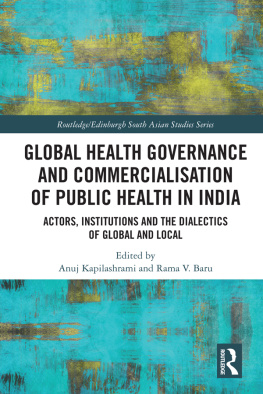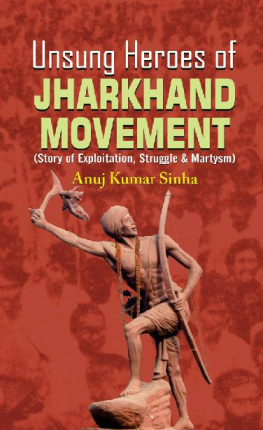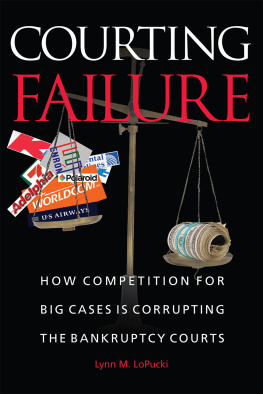Anuj Bhuwania - Courting the People
Here you can read online Anuj Bhuwania - Courting the People full text of the book (entire story) in english for free. Download pdf and epub, get meaning, cover and reviews about this ebook. year: 2022, genre: Politics. Description of the work, (preface) as well as reviews are available. Best literature library LitArk.com created for fans of good reading and offers a wide selection of genres:
Romance novel
Science fiction
Adventure
Detective
Science
History
Home and family
Prose
Art
Politics
Computer
Non-fiction
Religion
Business
Children
Humor
Choose a favorite category and find really read worthwhile books. Enjoy immersion in the world of imagination, feel the emotions of the characters or learn something new for yourself, make an fascinating discovery.

- Book:Courting the People
- Author:
- Genre:
- Year:2022
- Rating:4 / 5
- Favourites:Add to favourites
- Your mark:
- 80
- 1
- 2
- 3
- 4
- 5
Courting the People: summary, description and annotation
We offer to read an annotation, description, summary or preface (depends on what the author of the book "Courting the People" wrote himself). If you haven't found the necessary information about the book — write in the comments, we will try to find it.
Courting the People — read online for free the complete book (whole text) full work
Below is the text of the book, divided by pages. System saving the place of the last page read, allows you to conveniently read the book "Courting the People" online for free, without having to search again every time where you left off. Put a bookmark, and you can go to the page where you finished reading at any time.
Font size:
Interval:
Bookmark:
Public Interest Litigation in Post-Emergency India
Anuj Bhuwania
In recent years, PIL has made an appearance in many a Hindi film. Two examples come to mind. In the somewhat ungrammatically titled Sahib, Biwi aur Gangster Returns, the mention of PIL comes when a state legislator the eponymous Biwi, whose official position has come to her by dint of being married to a small-time prince in the North Indian state of Uttar Pradesh decides to take some interest in whats going on in her constituency. The first important piece of information her office assistant provides her with is that a PIL has been filed against land acquisition for a development project in her area. Her baffled response is, Yeh PIL kya hota hai? (What is PIL?) She is clearly ill-informed. But that the film chooses to invoke PIL to show her complete political cluelessness, and that the astounding nature of this fact will be immediately apparent to the audience watching popular cinema, the lowest common denominator in India if there is one, gives us some clue perhaps to the omnipresence of PIL in contemporary Indian life. The second film, a satirical comedy called Jolly LLB, is much more directly concerned with the operation of the judiciary. It centres around a small-town lawyer who is trying to make it big in Delhis law courts and decides that filing a PIL might be the quickest way to get media attention. In a scene that made it into the films promotional trailer, a judge is shown angrily throwing away Jollys legal brief, saying, What kind of PIL have you filed? You have spelt Prosecution as Prostitution and appeal as apple! Clearly, PIL is one kind of legal process everybody understands. As much as appeal and prosecution, it has entered the Indian demotic lexicon.
So widespread is its reach that PIL has become a sort of metonym for the greatness of the Indian judiciary. No area of Indian law has been written about as extensively (and almost entirely hagiographically) as PIL. There are more American law review articles on PIL than on any other area of Indian law. Indeed, Indian judges routinely cite these approving articles to hail their own achievements. PIL has by now been successfully transplanted in other neighbouring South Asian countries as well. PIL is celebrated by all and sundry as Indias unique contribution to contemporary jurisprudence. Lest it appear that I subscribe to this culturalist understanding linking PIL to its Indian-ness, I hope it will soon be apparent that my aim is precisely to question such a move. The remarkable thing, as we will see, is that such a self-consciously culturalist manoeuvre was exactly what enabled and accompanied the rise of PIL.
This book will study the history and politics of Public Interest Litigation, or PIL as it is popularly known, a jurisdiction unique to the Indian higher judiciary that arose in the late 1970s in the aftermath of the political emergency of 197577. It has been hailed as the most dramatic democratizing move that the Indian judiciary had made in the post-independence period. For example, according to legal scholar Usha Ramanathan, PIL led to an explosive jurisprudence of constitutional relevance and the rejection of redundancy of peoples. She argues that it enabled the court to extend a unique invitation to journalists, activists, academics and anyone else who may be a witness to constitutional neglect and lawlessness to participate in the judicial process.
A PIL is pursued by filing a writ petition either in one of the various State High Courts or the Supreme Court. This avenue was already available under the Indian Constitution but PIL makes recourse to it significantly easier. PIL is primarily a revolution in procedure, and its innovative features that emerged in its early years have been usefully summarised by a commentator Wouter Vandenhole:
- The rules of locus standi were relaxed.
- The formal requirements regarding the lodging of a petition were simplified.
- Evidence could be gathered by a commission appointed by the court.
- The procedure adopted was claimed not to be of an adversarial nature.
- The court could order far-reaching remedial measures.
- The execution of the remedial orders was supervised and followed up.
As Vandenhole summed them up: The first two innovations concern the start of the procedure, the next two have to do with its course, and the last two with its outcome.
Legal scholar Lavanya Rajamani explains the effect of these innovations:
The power of public interest litigation (PIL) in India lies in its freedom from the constraints of traditional judicial proceedings. PILs in India have come to be characterized by a collaborative approach, procedural flexibility, judicially supervised interim orders and forward-looking relief. Judges in their activist avatar reach out to numerous parties and stake-holders, form fact-finding, monitoring or policy-evolution committees, and arrive at constructive solutions to the problems flagged for their attention by public-spirited citizens. Judges have tremendous power, in particular in PILs, to design innovative solutions, direct policy changes, catalyse law-making, reprimand officials and enforce orders. And, they are not hesitant to exercise this power in what they perceive as the public interest. Where there is a perceived vacuum in governance, the Court rushes to fill it.
In order to begin to make sense of such celebratory clamour, a brief introduction to the structure of the Indian judicial system is necessary. Robert Moog, an eminent sociologist of Indian law, provides this useful summary:
Indias judiciary is a three-tiered, integrated system. The Supreme Court, which sits in New Delhi, is the only all-India forum. High Courts stand at the head of the judiciary in each state. These are the intermediate appellate courts in the system, but they also have writ jurisdiction. The third tier is the district-level courts. Despite Indias federal system of government, the court system is integrated in the sense that there is no bifurcation between state and federal judiciaries. These three tiers form a single hierarchy and administer both state and federal laws.
It is important to keep in mind that the heroic persona of the Indian judiciary made possible by PIL is reserved only for the State High Courts and the Supreme Court. Indeed, thanks to PIL, the higher judiciary is often viewed as the panacea for the various endemic social and political problems that plague India. The lower judiciary, the system of civil and criminal courts at the district level, on the other hand, is perceived as purely pathological inefficient, corrupt and overly embedded in the Indian social milieu while the appellate courts of course apparently transcend it. A remarkable paradox about studying Indias judiciary is the simultaneously held diametrically opposite view of the two wings of the same integrated system. This schizophrenia has been sustained for a long time and is only getting worse. One clue to the management of such an unsullied image by the higher judiciary, in the face of the impression of such extreme pathology below it, is the distancing tactic that the members of the higher judiciary have perfected: to intermittently express despair at the condition of the lower courts. Robert Moog gives a good example of this when he quotes a Supreme Court judge declaring from the bench in 1995, It is common knowledge that currently in our country criminal courts excel in slow motion. The higher judiciary has successfully evaded any responsibility for the problems of the lower judiciary, although strictly speaking, they have direct vertical oversight over the latter.
Moog has analyzed such appellate treatment of lower courts in India in some detail. One effect of such despair is a constant search for alternatives, which range from versions of the more traditional
Font size:
Interval:
Bookmark:
Similar books «Courting the People»
Look at similar books to Courting the People. We have selected literature similar in name and meaning in the hope of providing readers with more options to find new, interesting, not yet read works.
Discussion, reviews of the book Courting the People and just readers' own opinions. Leave your comments, write what you think about the work, its meaning or the main characters. Specify what exactly you liked and what you didn't like, and why you think so.










